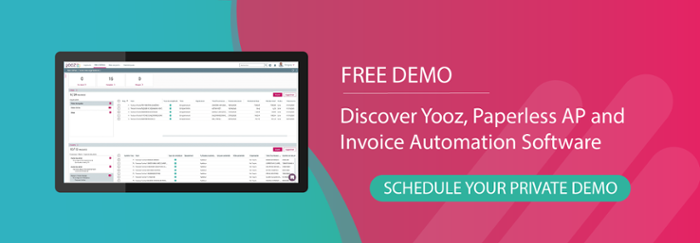Efficient Accounts Payable (AP) procedures in place ensure that organizations accurately submit purchase orders, receive invoices quickly, and pay vendors and suppliers on time. If your company is considering changing from manual processes to Accounts Payable automation, understanding the best practices for streamlining the cycle and reviewing common challenges can support you in determining whether your organization is ready to make the switch.
Whether you’re hoping to automate to make dealing with AP faster and more precise in the upcoming months or within the next few years, we share a guide to streamlining your AP process in this blog post.
What are Accounts Payable Procedures?
Accounts Payable procedures are a set of steps and guidelines that organizations use to manage and process their AP transactions. They ensure that payments are sent and received by vendors and suppliers as smoothly and efficiently as possible.
While all organizations operate differently, the AP process typically includes the following steps:
Step 1: Upon identifying a need or demand for a particular product or service, organizations submit a purchase order, or PO, to vendors and suppliers.
Step 2: After receiving the PO, vendors and suppliers confirm whether they can supply the product or service. They then fulfill the order and send the organization a bill or invoice.
Step 3: Once the invoice is received, the AP department cross-references the PO and invoice for verification purposes. Depending on the PO matching processes employed, the AP department may also check the sales receipt and confirm that the services received and the terms and conditions match the initial PO and are correct. This ensures that the correct number of goods or services were actually received and are consistent with what was ordered.
Step 4: Having carried out all relevant checks, the invoice is then sent off for approval to the relevant department or manager before processing payment through a check or some type of electronic payment system.
Step 5: After approval, payment is sent to the vendor for their services or goods.
Of course, all transactions and payments are also recorded in the company's accounting system for accurate bookkeeping, expense tracking, and future reference.
To note, when manually completing accounts payable procedures and processes, the responsibilities for doing so correctly generally lie with the AP department. Here, team members create POs, input data from invoices, and manually compare the figures on each document to ensure they are identical before approving invoices and sending payments to the vendor. A well-managed, efficient AP department is therefore key in the cash flow process.
While some organizations still use traditional AP process methods, nowadays, 64.4% of small and medium organizations take advantage of accounting software to automate and streamline AP processes.
Accounts payable automation software has numerous benefits. In addition to increasing efficiency and speeding up the payment cycle, automating the AP process enhances relationships between customers and vendors. Furthermore, it mitigates the risk of errors and mistakes. Not only does this save organizations a considerable amount of time, but it also saves money that may otherwise be spent rectifying potentially costly manual errors.

What Are Best Practices to Streamline the Procure-To-Pay Cycle?
Streamlining your procure-to-pay cycle delivers many benefits. However, to take full advantage of these benefits, there are a few best practices to keep in mind when you decide to make the switch. These include the following.
- Secure stakeholders buy-in.
As you introduce new ways of working to your organization, identifying your stakeholders, and getting them on board can significantly impact the whole organization, especially as your stakeholders will act as trusted advocates. - Ensure employees are on board and happy to use automation software.
Adjusting to using Accounts Payable automation can take time. Some employees may feel apprehensive about using software to carry out their previously manual work.
Management should take time to explain the benefits of automating the process as part of encouraging the employees to get on board, explain the benefits of automating the process. You could even share a report or case studies and statistics that demonstrate the effectiveness of the software. - Provide training.
Once your employees are on board, providing training is essential. One of the best practices for implementing Accounts Payable procedures and streamlining processes, training guarantees employees will understand how to use the software for maximum benefit. - Inform your vendors and suppliers.
Although you might not think that changing your procedures will affect your vendors or suppliers, you should inform them that you’re automating your software and share any changes you may require them to make to the invoices they submit.
For example, if they submit paper invoices, it’s best to ask them to send you electronic invoices that can be easily uploaded into your software. This contributes to a positive and mutually beneficial relationship. Note that prompt payment will also contribute to the creditworthiness of the company. - Make sure that all information is up to date.
Ensuring that all information is up to date is a critical part of the AP process. Once you start using AP automation software, updating invoice statements and information, such as outstanding payments, is essential to guarantee payments are made on time and to the right accounts.
How Do Best Practices Help Eliminate Factors That Prevent AP Teams From Being Efficient?
Research indicates that lack of communication, hesitation to implement new ways of working, and a shortage of training are just some factors that hinder efficiency. But did you know that integrating best practices can help eliminate these factors?
For example, when employees receive training that supports them in understanding and using automation software, they’re less likely to make mistakes and more likely to feel empowered to complete their day-to-day tasks. They’ll also be more open-minded about using software, which can benefit organizational operations.
Likewise, when you obtain stakeholder buy-in, leaders and managers will advocate for automating the AP process. Once your AP team sees that your stakeholders recognize the software benefits, they’ll be more likely to be willing to try new ways of working.
What Are Some of the Challenges of Implementing Automated Accounts Payable Procedures?
While there are numerous advantages associated with implementing automated Accounts Payable procedures, there are a few challenges worth noting, especially if you’re considering implementing workflow automation within your organization. Below, we dive into two of the most common challenges and share our insights to help you overcome these.
Technology
We’ve previously shared that one challenge of automating the AP process includes missing out on all of the benefits of automation due to selecting the wrong type of technology.
When it comes to technology and streamlining AP processes, opting for the technology and software that offers all the functionality you need is vital. But with so many options, this can be easier said than done. However, by considering your organizational requirements and what you hope to achieve by automating the AP process, you can identify which software is best for you.
Limited Staff Knowledge
The Institute of Financial Operations & Leadership (IFOL) has shared that 41% of businesses are planning to automate their AP processes. Although this is significant, it means that a large percentage of companies still continue to employ manual methods. For some, this could be due to a lack of staff knowledge.
As a result, it’s essential that staff training and development is available. Not only will this increase organizational performance, but it could contribute to greater workplace satisfaction and productivity, as automation reduces manual labor and offers employees the chance to increase their skill set.
Automate Your Accounts Payable Processes Today
While we’ve answered a number of frequently asked questions about AP processes here, if you’d like to find out more about our software or the benefits of accounts payable automation, contact us today. At Yooz, we’re always here to help you optimize your AP processes.







